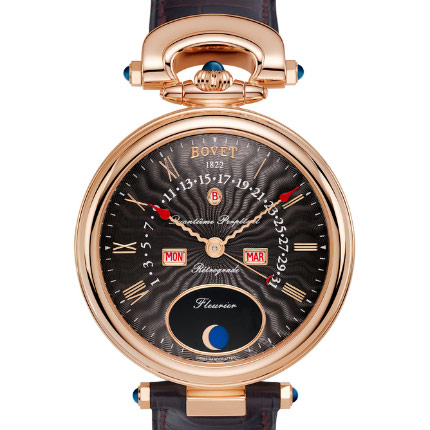
Perpetual Calendar Retrograde Guilloché
A magnificent demonstration of how to display a full calendar and moon phases in letters, numbers and images.
Retrograde indications — where a hand flies back to the beginning of a scale after reaching a prescribed end — are popular because they challenge our view of time as a constant rotation of passing minutes, hours, days and months.
It's simple enough, mechanically, to advance the dates-hand every 24 hours against a spring, which is released by the perpetual-calendar mechanism at the end of the month (28, 29, 30 or 31 days) so that it flicks back to the beginning.
The problem that underlies all such retrograde mechanisms is that the hand flies back (through an arc of 225° in this watch) with such force that it bounces up again on the scale and catches on the second or date.
BOVET gets around the bounce-back problem by slowing the return of the dates-hand with a train of wheels. This solution, devised at a Swiss watchmaking school early last century, was found to be the most reliable, but it increases the number of parts for the
perpetual-calendar mechanism alone to 230.

